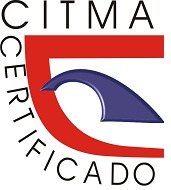Español
Keywords:
Segregación, Simulación, TrayectoriasAbstract
The purpose of this work is to present a study of residential segregation based on trajectories. The intention is to verify whether the fingerprint of a particular city, in this case Paris, is significantly different from the same city, but assuming it is well mixed; In other words, how different is the real city from a well-mixed ideal? Empirical tests are considered based on intensive simulations and comparisons of empirical quantiles. Being a starting point, only the behavior of the variable that reports the proportion of social houses for each census block in Paris is analyzed. The results obtained with this new method are compared with the real trajectories previously calculated and showed a high segregation for this variable, towards the area of the periphery of Paris. This work contributes to a general project of urbanization problems whose final objective is to locate vulnerable points of the cities where it will be necessary to apply public policies for the improvement of the measured indicators, such as access to public transport, income, or as the case study, the distribution of social houses in the city of Paris. It is a first approach to the phenomenon, it is intended to expand research to data in Cuban cities such as Havana, Santiago de Cuba and Cienfuegos, as well as a look for the entire island, emphasizing the variables that influence population aging.
References
Adam Douglas, H., & Paweł, P., (2011). Emergence of segregation in evolving social networks. PNAS, 108(21), 8605–8610.
Addario-Berry, B.A. Reed. (2018). Ballot theorems for random walks with finite variance. Horizons of Combinatorics, 17(1), 9-35.
Aguilar Domínguez, M. (2017). Las dimensiones espaciales de la segregación residencial en la ciudad de Mérida, Yucatán, a principios del siglo XXI. Península, XII(1), 147-188.
Arcaute, E., Hatna, E., Ferguson, P., Youn, H., Johansson, A., & Batty, M. (2015). Constructing cities, deconstructing scalilng laws. J. R. Soc. Interface, 12.
Batty, M. (2011). Building a Science of Cities. UCL Centre for Andvanced Spatial Analysis, 170.
Chodrow, P. S. (2017). Structure and information in spatial segregation. PNAS, 114(44), 11591–11596.
Furno, A., Fiore, M., & Stanica, R. (2017). Joint Spatial and Temporal Classification of Mobile Traffic Demands. IEEE INFOCOM 2017- IEEE Conference on Computer Communications, 1-9.
Lizarraga, C. (2012). Expansión metropolitana y movilidad: el caso de Caracas. EURE, 38(113), 99-125.
Loaiza Cerón, W., & Carvajal Escobar, Y. (2014). Índice de Segregación Espacial y Socioeconómico (ISES) en las comunas de Santiago de Cali. Cuaderno de Vivienda y Urbanismo, 7(13), 84-101.
Medina, P., Goles, E., Zarama, R., & Rica, S. (2017). Self-Organized Societies: On the Sakoda Model of Social Interactions. Hindawi Complexity, 16.
Olteanu , M., & Lamirel, J.-C. (2019). When clustering the multiscalar fingerprint of the city reveals its segregation patterns. International Worshop on Self-Organizinf Maps, 140-149.
Olteanu, M., Hazan, A., Cottrell, M., & Randon-Furling, J. (2018). Multidimensional Urban Segregation Multidimensional Urban Segregation. Invetigación de Operaciones.
Olteanu, M., Randon-Furling, J., & Clark, W. (2019). Segregation through the multiscalar lens. Proceeding of the National Academy of Sciences (PNAS), 116(25), 12250-12254.
Olteanu, M., Randon-Furling, J., & Clark, W. (2019). Spatial analysis in high resolution geo-data. European Symposium on Artificial Neural Networks, Computational Intelligence and Machine Learning (ESSAN).
Adam Douglas, H., & Paweł, P., (2011). Emergence of segregation in evolving social networks. PNAS, 108(21), 8605–8610.
Addario-Berry, B.A. Reed. (2018). Ballot theorems for random walks with finite variance. Horizons of Combinatorics, 17(1), 9-35.
Aguilar Domínguez, M. (2017). Las dimensiones espaciales de la segregación residencial en la ciudad de Mérida, Yucatán, a principios del siglo XXI. Península, XII(1), 147-188.
Arcaute, E., Hatna, E., Ferguson, P., Youn, H., Johansson, A., & Batty, M. (2015). Constructing cities, deconstructing scalilng laws. J. R. Soc. Interface, 12.
Batty, M. (2011). Building a Science of Cities. UCL Centre for Andvanced Spatial Analysis, 170.
Chodrow, P. S. (2017). Structure and information in spatial segregation. PNAS, 114(44), 11591–11596.
Furno, A., Fiore, M., & Stanica, R. (2017). Joint Spatial and Temporal Classification of Mobile Traffic Demands. IEEE INFOCOM 2017- IEEE Conference on Computer Communications, 1-9.
Lizarraga, C. (2012). Expansión metropolitana y movilidad: el caso de Caracas. EURE, 38(113), 99-125.
Loaiza Cerón, W., & Carvajal Escobar, Y. (2014). Índice de Segregación Espacial y Socioeconómico (ISES) en las comunas de Santiago de Cali. Cuaderno de Vivienda y Urbanismo, 7(13), 84-101.
Medina, P., Goles, E., Zarama, R., & Rica, S. (2017). Self-Organized Societies: On the Sakoda Model of Social Interactions. Hindawi Complexity, 16.
Olteanu , M., & Lamirel, J.-C. (2019). When clustering the multiscalar fingerprint of the city reveals its segregation patterns. International Worshop on Self-Organizinf Maps, 140-149.
Olteanu, M., Hazan, A., Cottrell, M., & Randon-Furling, J. (2018). Multidimensional Urban Segregation Multidimensional Urban Segregation. Invetigación de Operaciones.
Olteanu, M., Randon-Furling, J., & Clark, W. (2019). Segregation through the multiscalar lens. Proceeding of the National Academy of Sciences (PNAS), 116(25), 12250-12254.
Olteanu, M., Randon-Furling, J., & Clark, W. (2019). Spatial analysis in high resolution geo-data. European Symposium on Artificial Neural Networks, Computational Intelligence and Machine Learning (ESSAN).
Randon-Furling, J., Olteanu, M., & Lucquiaud, A. (2018). From urban segregation to spatial structure detection. Environment and Planning B: Urban Analytics and City Science, 0, 1-17.
Schelling, T. C. (1971). Dynamic Models of Segregation. Journal of Mathematical Sociology, 1, 143-186.
Downloads
Published
How to Cite
Issue
Section
License
Copyright (c) 2020 Dafne García de Armas, Madalina Olteanu, Sira Allende Alonso, Yudivian Almeida Cruz

This work is licensed under a Creative Commons Attribution-NonCommercial 4.0 International License.













